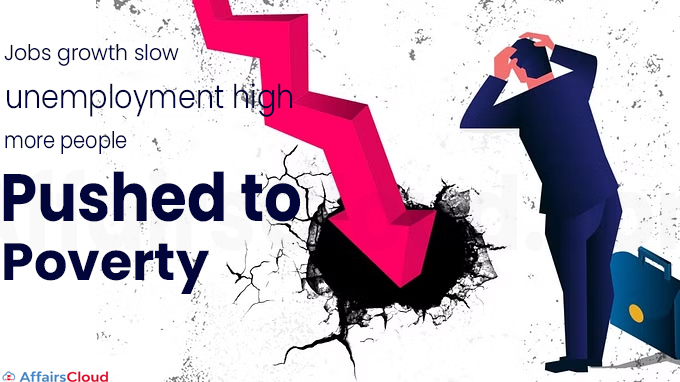 According to the “World Employment and Social Outlook: Trends 2023” (WESO Trends), released by the International Labour Organization (ILO), the present global economic slowdown is anticipated to worsen social and economic inequalities.
According to the “World Employment and Social Outlook: Trends 2023” (WESO Trends), released by the International Labour Organization (ILO), the present global economic slowdown is anticipated to worsen social and economic inequalities.
- As a result, more workers will be forced to accept lower-quality, poorly paid jobs with no job security or social protection, increasing inequality that has already been worsened by the COVID-19 crisis.
According to projections, global employment would expand by 1.0% in 2023, a significant drop (less than half the level) from the 2.3% growth rate in 2022.
- Global unemployment is expected to rise slightly in 2023, by roughly 3 million, to 208 million. This amounts to a 5.8% unemployment rate.
Key Highlights of the Report:
i.The limited labour supply in high-income countries is a major factor in the projected moderate growth in global unemployment.
- This would reverse the decline in unemployment seen globally between 2020 – 2022.
ii.The report also defines the ‘Global Jobs Gap’ as a new, comprehensive indicator of unmet employment needs.
- In 2022, the global jobs gap was 473 million people, equivalent to a 12.3% job gap rate. It’s nearly 33 million more than in 2019.
- It comprises the 205 million unemployed (an unemployment rate of 5.8%) and the 268 million people who wished to work but did not meet the criteria for being deemed unemployed.
iii.According to the report, “job quality” remains a major issue, along with unemployment, and “decent work is fundamental to social justice.”
iv.Due to the current slowdown, many workers will be forced to accept lower-quality jobs, often at extremely low pay and with insufficient hours.
- The report claims that the total working hours per person in the Asia-Pacific (APAC) region remain below pre-pandemic levels.
v.The first instance of “stagflation,” a period of high inflation and low growth since the 1970s, has been brought on by rising geopolitical tensions, an uneven COVID-19 pandemic recovery, and supply chain bottlenecks that are slowly fading.
- Stagflation is an economic condition defined by stagnant economic growth, high unemployment, and high inflation. Stagflation is a combination of stagnant growth and rising inflation.
vi.According to the report, young people and women are doing significantly worse on the labour market.
- In 2022, the global labour force participation rate for women was 47.4%, compared to 72.3% for men.
- This 24.9 % point gap suggests that there are two economically inactive women for every economically inactive man.
vii.Young people (aged 15 – 24) have 3 times the rate of unemployment of adults and have great difficulty finding and keeping decent jobs.
- More than one-in-five young people (23.5%) are not in employment, education, or training (NEET).
Recent Related News:
According to the “Global Estimates of Modern Slavery-Forced Labour and Forced Marriage,” released by the International Labour Organization (ILO), there were approximately 50 million (49.6 million) people living in modern slavery on any given day in 2021, up from 40 million in 2016 and a 25% increase over the last 5 years. [as of September 2022].
About the International Labour Organization (ILO):
ILO is the only tripartite United Nations (UN) agency that brings together governments, employers, and workers from 187 member countries. It was founded at the Paris Peace Conference under the Treaty of Versailles.
- India is a founder member of the ILO.
Director-General– Gilbert Fossoun Houngbo
Headquarters– Geneva, Switzerland
Establishment– 1919




